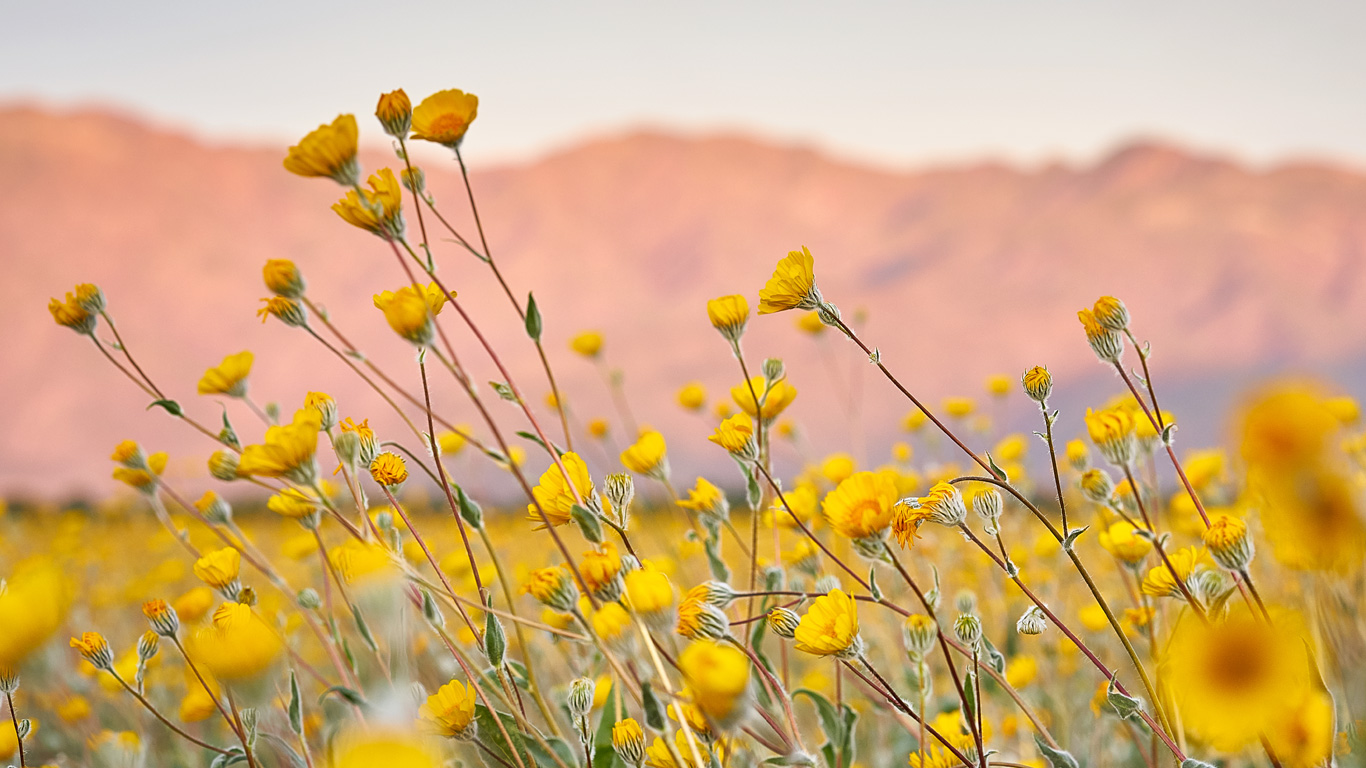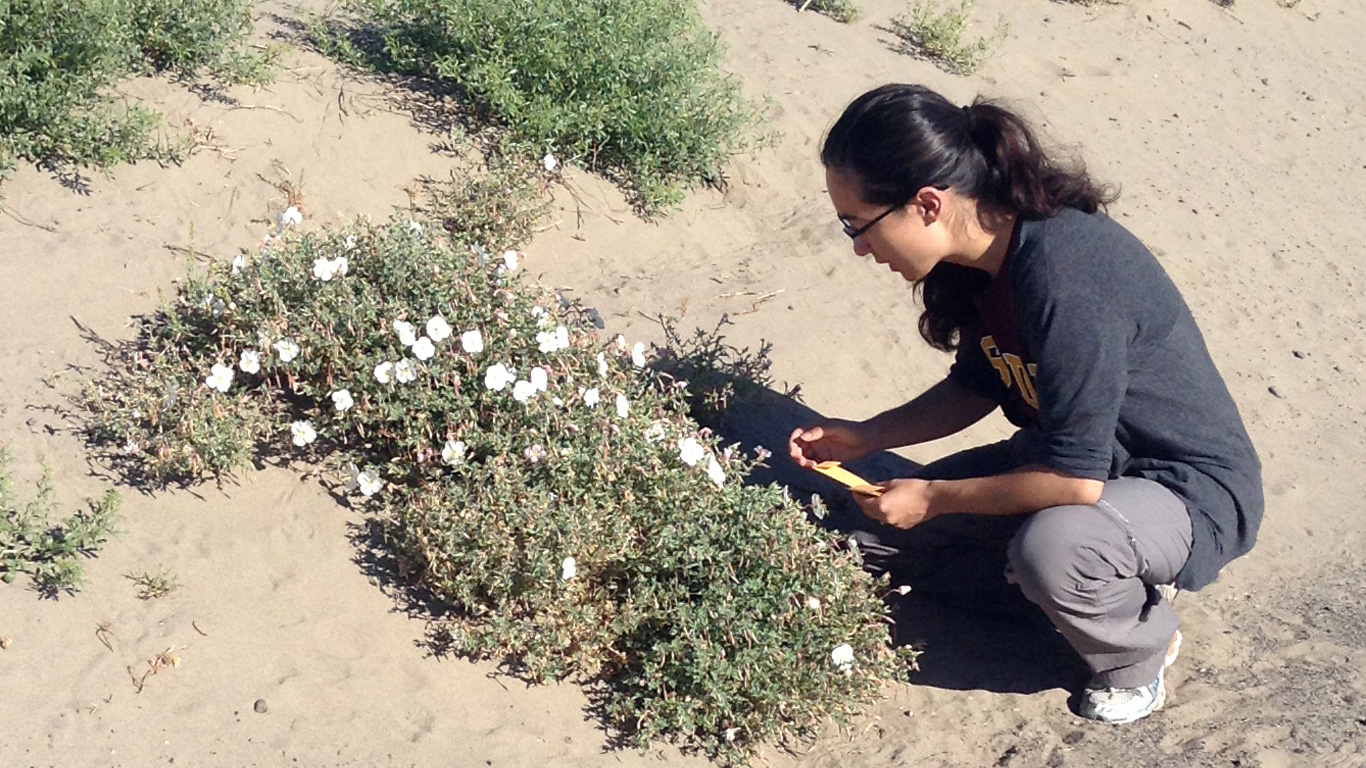 Earth’s biodiversity has been profoundly shaped by global climate change for eons, and researchers expect the current ongoing and rapid changes to have as great an effect, especially on the evolution of plants, says Kathryn Theiss, assistant professor of biology at California State University, Dominguez Hills (CSUDH).
Earth’s biodiversity has been profoundly shaped by global climate change for eons, and researchers expect the current ongoing and rapid changes to have as great an effect, especially on the evolution of plants, says Kathryn Theiss, assistant professor of biology at California State University, Dominguez Hills (CSUDH).
Theiss is fascinated by the evolution of plant reproduction and how reproductive strategies are affected by conservation issues, especially global climate change. She tends to focus on rare plants, favoring moth-pollinated species such as Evening Primroses, the plant group she is currently studying.
“Evening primroses are generally not considered rare yet, but could become rare,” said Theiss, who has been teaching at CSUDH since 2015. “But it’s likely that many plant species will need to evolve to survive due to climate change and related changes in temperature and drought.”
 Climate change and global warming can alter plants’ flowering cycle, especially in mountain ranges and other high-altitude regions where spring now comes earlier due to rising temperatures and a decreasing amount of rain and snow that falls each year.
Climate change and global warming can alter plants’ flowering cycle, especially in mountain ranges and other high-altitude regions where spring now comes earlier due to rising temperatures and a decreasing amount of rain and snow that falls each year.
“The quicker the snow melts, the quicker plants grow and bloom, and this is happening worldwide. Then the summer flowering plants [like evening primroses] adjust to what happens in the spring,” said Theiss, whose previous research includes pollination in milkweeds in the mid-western United States, demographic modeling of a rare orchid in Madagascar, and evaluating species boundaries in camas lilies in the Pacific Northwest. “When it heats up earlier than normal, the plants receive the wrong cues and produce their flowers early. Some early spring flowering plants, depending on where they are located, are flowering one to three weeks earlier than normal.”
This summer, Theiss and her students will continue her study of evening primroses, which as the name suggests, opens its flowers in the late afternoon or at dusk. The species they will examine grows throughout eastern Washington, Oregon, Idaho, and into Utah.
“This species grows in what are basically sand dunes not associated with water bodies; where nothing else can grow for the most part because there are very few nutrients in the sand,” said Theiss, who combines field, genetic, and greenhouse studies of both rare and common species to conduct her research. “They are fairly large, white–beautiful–and start emitting scent quickly when they flower to attract moths.”
Climate Change Threatens Relationships Too

Plants that have short growing season are also susceptible to climate change and may be more temperature sensitive causing them to flower and reproduce as soon as possible, while longer living species, like succulents and flowering trees, tend to be less effected by seasonal change, but still are. Evening primroses begin flowering in June and continue into September, However, they have a specific relationship with an animal pollinator, one of two species of hawkmoths that is “quite beautiful.”
“If you grow a plant species that’s pollinated by one specific animal species, such as a butterfly or moth, then that butterfly or moth will also be affected by the temperature change, but may be affected differently than the plant,” said Theiss. “If a plant is flowering two weeks earlier than normal, but the insect is only available one week earlier, that seasonal mismatch, for the most part, affects the plant more negativity, because unlike plants–such as evening primroses that rely on the hawkmoths–an insect can feed off several plant species to increase its survival.”

Theiss is also interested in how some plant species have the ability to pollinate themselves to produce seeds, an evolutionary trait that first caught her interest while writing her Ph.D. dissertation at the University of Connecticut. It is prevalent in some evening primroses, including those she and her students will study this summer.
White Evening Primrose.“While some evening primroses are self-pollinating, others are not because they have a genetic mechanism that prevents them from inbreeding. Evening primrose species that live in extreme environments–very hot deserts or cold areas with high elevation–tend to be self-compatible,” said Theiss. “However, self-pollinating is kind of a last-ditch effort to produce seeds when no hawkmoths are available to pollinate them. Unfortunately, inbreeding in plants results in negative genetic results, as it does in humans.”